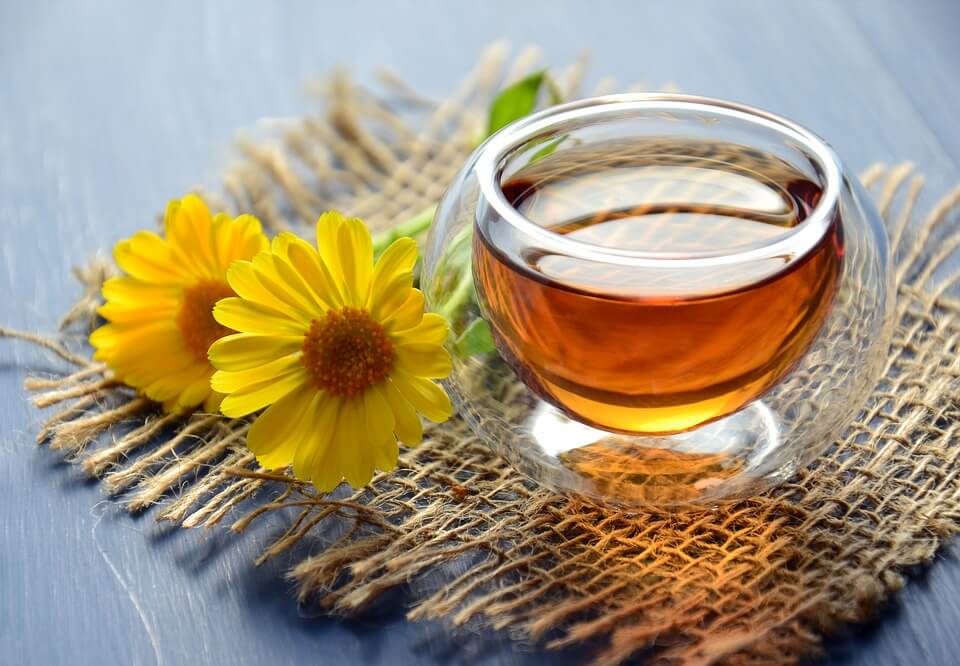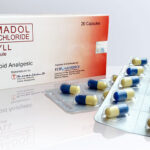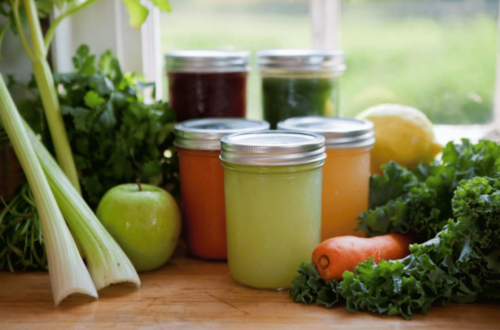Amazing Medicinal Uses of Marigold
Before getting down to medicinal uses of marigold, let’s get about this medicinal plant called “Marigold” or Marigold”.
Marigold is a petite plant with pale green leaves and colorful flowers in shades of yellow or orange. While there are roughly 20 types of plants in the Marigold family, Marigold officinalis is the one primarily valued for its medicinal and culinary purposes.
Marigold has different names:
- Poet’s marigold
- Pot marigold
- Marigold
Marigold is also known by various names such as Poet’s marigold, Pot marigold, or simply Marigold. It’s important to note the distinction between marigolds and true marigolds, which are part of the Tagetes genus and are primarily cultivated for their aesthetic appeal.
Despite their visual resemblance with vibrant yellow and orange petals, distinguishing between the two can be challenging. Nevertheless, while marigold flowers are considered suitable for consumption, there remains uncertainty regarding the edibility of true marigolds.
The term “marigold” originates from either Latin (kalendae) or Middle English (calends), both referring to the “first day of the month.” This could be because marigold plants often begin blooming at the onset of various months.
Folklore and History
Long ago, the Ancient Greeks used Marigold petals to decorate things. They also knew it could be used in different ways, like adding color to food, making makeup, dyeing fabrics, and even as medicine.
Marigolds started growing in European gardens way back in the 12th century. By the 14th century, people really liked Marigold for its many special abilities.
An old-time writer named Macer said in his book about herbs that just looking at Marigold flowers could make your eyesight better and get rid of bad stuff in your head.
Marigold has been thought to be pretty magical and good for you for ages. Ancient Egyptians used it to make their skin look better, and the Greeks and Romans used it in their cooking.
Even in ancient and modern India, people use Marigold in weddings and religious ceremonies. They believed it could protect you from bad things happening and even help you see the future!
Some people used to scatter Marigold flowers under their beds to keep robbers away and have dreams that could tell them who robbed them!
Traditional Use
Marigold, a type of Marigold, has been used for thousands of years because it’s not just a pretty flower – it’s good for your health too.
People think Marigold originally came from Egypt and then was brought to places like Britain by the Romans a long time ago. Marigold, also called “Pot Marigold,” was a big deal in places like Ancient Greece, Rome, and Arabia. People mostly used it to treat skin problems, like small cuts, rough spots on the skin, bug bites, rashes, burns, and even hemorrhoids.
Nutritional Value of Marigold
Marigolds, beyond their vibrant beauty, hold a surprising wealth of nutritional value. Extracts from these cheerful flowers contain a remarkable array of beneficial compounds:
- Amino Acids: Marigolds boast a profile of 15 essential amino acids. These amino acids act as the building blocks for proteins, which play critical roles in nearly every bodily function, from tissue repair and growth to enzyme production and hormone regulation.
- Phytonutrients and Carotenoids: Nature has packed marigolds with powerful phytonutrients, a group of plant-based compounds known for their antioxidant properties. These antioxidants help combat free radicals, unstable molecules that can damage cells and contribute to various health concerns.
Marigolds particularly shine in their content of carotenoids, a specific type of phytonutrient. This impressive list includes:
- Neoxanthin
- Luteoxanthin
- Lycopene
- Lutein
- Beta-carotene
Medicinal Uses of Marigold
Nature’s Ally for Skin Healing
Marigold, also known as pot marigold, has a long and illustrious history as a natural remedy for skin concerns. From ancient times to the present day, its reputation for promoting skin healing persists. Here’s a closer look at how marigold benefits the skin:
- Wound Healing Powerhouse: Marigold has earned acclaim for its ability to accelerate wound healing. It’s believed to work by:
- Stimulating Epithelial Cell Production: Epithelial cells form the outermost layer of your skin, acting as a vital barrier. Marigold is thought to stimulate the production of these cells, promoting faster wound closure. This effect is attributed to the presence of glycoproteins and nucleoproteins in marigold.
- Increased Cell Turnover: Marigold may enhance the rate at which skin cells regenerate, promoting faster healing and a renewed appearance.
- Collagen Boost: Collagen is a protein that provides structure and elasticity to your skin. Marigold is thought to stimulate collagen production, leading to firmer and more youthful-looking skin.
- Hydration Hero: Marigold can help dry skin retain moisture, keeping it soft and supple.
- Natural Antiseptic and Anti-inflammatory: Marigold boasts potent natural antiseptic and anti-inflammatory properties. The key players here are triterpenoids, unique compounds found in the plant. These triterpenoids are believed to be responsible for:
- Combating Inflammation: Triterpenoids are thought to help reduce inflammation, soothing irritation and promoting healing.
- Preventing Swelling (Anti-Edematous): These compounds may also help prevent swelling and edema, minimizing puffiness associated with injuries or skin conditions.
- Ear Infection Soother: Research suggests that marigold extract, applied in drop form to the ear canal, can be beneficial for treating bacterial ear infections. It may help to:
- Reduce Inflammation and Pain: Marigold’s anti-inflammatory properties may lessen swelling and discomfort associated with ear infections.
- Promote Healing: By potentially aiding in cell regeneration and reducing inflammation, marigold extract may support the healing process within the ear canal.
Marigold’s versatility and gentle nature make it a valuable addition to your natural skincare regimen. However, it’s important to note that more research is needed to definitively confirm all its benefits (medicinal uses of marigold).
As always, consult your healthcare provider before using marigold for any specific health concern.
SEE ALSO: Cure for Cirrhosis
Against Free Radicals and Beyond
Marigold isn’t just a pretty flower; it’s a powerhouse of antioxidants! Here’s how it benefits your health:
- Combating Cellular Damage with Antioxidants: Marigold oil’s vibrant orange and yellow hues come from its rich content of carotenes and carotenoids. These plant chemicals act as antioxidants, essential for protecting your cells from free radicals. Free radicals are unstable molecules that can damage cells and contribute to various health concerns. Antioxidants neutralize these free radicals, safeguarding your cellular health.
- Eye Health Benefits: Beyond Beauty: Research suggests marigold extract holds promise for treating conjunctivitis (pink eye) and other eye inflammation conditions. This effect is attributed to its multifaceted properties:
- Antibacterial and Antiviral Defense: Marigold extract may help combat bacterial and viral infections that can cause eye irritation and inflammation.
- Fungal Fighter: It may also possess antifungal properties, offering potential benefits against fungal eye infections.
- Immune System Support: Marigold’s immuno-stimulating properties may help strengthen your body’s natural defenses, potentially aiding in fighting off eye infections.
- Vision Protection: The antioxidant power of marigold may offer additional benefits by protecting the delicate eye tissues from UV radiation and oxidative damage, which can contribute to vision problems over time.
- Soothing Sore Throats and Mouth Ulcers: Marigold’s antimicrobial and antiseptic qualities make it a potential ally in relieving sore throats, gingivitis (gum inflammation), tonsillitis (inflamed tonsils), and mouth ulcers. Gargling with marigold tea may help soothe the irritated mucous membranes of the throat and mouth, easing discomfort and promoting healing.
While research continues to explore the full potential of marigold, its natural properties offer promising benefits for skin health, eye care, and soothing common throat and mouth irritations.
Usable Forms of Marigold
Marigold’s versatility extends beyond its impressive internal benefits (medicinal uses of marigold). Here’s how you can incorporate marigold into your daily routine for topical applications:
- Nourishing Skin from Within: Marigold Tea: Brewing a cup of marigold tea offers a delicious and potentially skin-nourishing experience. This gentle tea is believed to:
- Promote Healthy Skin: Regular consumption of marigold tea may contribute to overall skin health.
- Internal Antifungal Support: Some studies suggest marigold may offer internal antifungal properties.
- Soothing Digestion: Marigold tea’s calming properties may help soothe the intestinal tract, potentially easing discomfort.
- Soothing Skin Concerns and Enhancing Massage: Marigold Oil: Marigold oil, with its golden hue, is a popular choice for topical applications. Here are some ways to utilize it:
- Skincare Hero: Marigold oil can be directly applied to irritated or damaged skin areas. Its anti-inflammatory and soothing properties may promote healing and reduce discomfort.
- Massage Marvel: Incorporating marigold oil into your massage routine can be a luxurious and potentially beneficial experience. Its calming properties may help ease muscle tension and promote relaxation.
Important Note: While marigold offers a range of potential benefits, it’s crucial to consult your healthcare provider before consuming marigold tea or using marigold oil topically, especially if you have any underlying health conditions or are taking medications.
Marigold Oil Dilution and Tea Brewing: Practical Tips
Here’s a breakdown of how to use marigold oil and tea for topical applications and internal consumption:
:max_bytes(150000):strip_icc()/calendula-flowers-and-oil-186179018-be94d872039c402cb654fc9671b15cd6.jpg)
Marigold Oil Dilution:
- Concentration is Key: Pure marigold oil can be quite potent. For topical use, it’s generally recommended to dilute it with a lighter carrier oil. A common ratio is 10% marigold oil to 90% carrier oil.
- Carrier Oil Choices: Popular carrier oils for diluting marigold oil include sweet almond oil, grapeseed oil, and wheat germ oil. Choose one that suits your skin type and preference.
- Massage Application: For a full-body massage, you can use approximately 30 ml (1 ounce) of the diluted marigold oil blend.
- Spot Treatment: Marigold oil can also be applied directly to troubled skin areas without dilution, but a patch test on a small area is recommended before widespread use.
Marigold Tea Brewing:
- Simple and Soothing: Making marigold tea is an easy way to potentially reap its internal benefits.
- Dosage: Use 1 teaspoon of dried marigold flowers per cup of hot water.
- Steeping Time: Steep the flowers for 10-15 minutes for a flavorful and potentially soothing tea.
Important Reminder:
While this information provides a general guideline regarding the medicinal uses of marigold, it’s advisable to consult with a healthcare professional before using marigold oil topically or consuming marigold tea, especially if you have any underlying health conditions or are taking medications.
Essential Precautions When Using Marigold
While marigold offers a range of benefits (medicinal uses of marigold), it’s crucial to be aware of some important precautions:
- Pregnancy and Breastfeeding: If you’re pregnant or breastfeeding, avoid using marigold extract. The potential effects on pregnancy and breast milk are still unknown.
- Asteraceae Family Allergy: Exercise caution if you have allergies to plants in the Asteraceae (daisy) family, as marigold is also a member of this family.
- Confusing Edibles: Before consuming any edible flowers, be sure to properly identify them. Many plants resemble marigold but may be toxic.
From Garden to Kitchen and Beyond
Growing and Harvesting:
- Self-Sufficiency: For optimal control and to avoid potential pesticide exposure, consider growing your own marigold flowers.
- Harvesting for Peak Potency: Pick flowers when they’re fully bloomed, typically in the morning, to capture their best qualities.
Culinary Delights:
- Tangy Twist: Marigold flowers add a peppery, zesty flavor to salads or soups.
- Natural Food Coloring: Like “poor man’s saffron,” marigold petals can add color and subtle flavor to various dishes like cheese, butter, bread, custards, soups, and cookies.
Creative Applications
- Fabric and Hair Dye: Marigold petals can be used for natural fabric and hair dyeing.
- Pharmaceutical Colorant: The pharmaceutical industry sometimes utilizes marigold to enhance the appearance of medications.
Topical Uses: Fresh Flower to Salve
- Wound Care: For minor cuts or scrapes, consider placing fresh marigold petals directly on the wound and covering it with a bandage. Change the petals every few hours.
- Homemade Marigold Salve: This salve can soothe dry skin, rashes, and minor irritations:
-
- Gather marigold flowers and place them in a jar.
- Cover the flowers completely with olive oil.
- Add a few drops of vitamin E oil or wheat germ oil to minimize mold growth.
- Let the mixture infuse in a cool, dark place for 6 weeks.
- Strain the oil using cheesecloth and a funnel.
- Gently heat 2 tablespoons of the infused oil.
- While stirring (be cautious, beeswax melts quickly), add 1.5 tablespoons of grated beeswax.
- Pour the mixture into a sterilized jar.
- Adjust consistency by adding more beeswax for a firmer salve or more oil for a thinner one.
Remember: While this information provides general guidance, consulting a healthcare professional before using marigold topically or consuming it is essential, especially if you have underlying health conditions or take medications.

A graduate of Computer Science and Information Management Technology. Diploma – Caregiving, Certificates – Dementia and Diabetes Awareness and Management. A researcher, blogger, songwriter, singer and acoustic guitarist. Born in an environment where natural talents such as healing are imparted at our natural birth. This natural talents of healing is the result of our genetic inheritance and the training from family environment.












